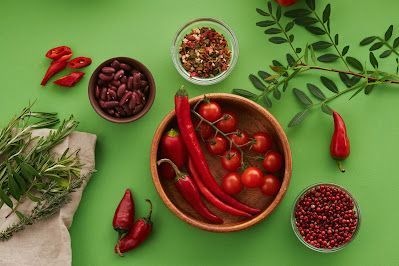Spicy food has evolved from a mere culinary trend to a cultural movement, taking center stage in kitchens and restaurants across the world. From fiery hot sauces to increasingly spicy dishes, the craving for heat has transcended borders. But what’s behind the growing appetite for spicy food? And why are we, as a global society, increasingly drawn to dishes that make us sweat?
The Science Behind Our Spice Cravings
The desire for spicy food is deeply rooted in human biology. Capsaicin, the active compound in chili peppers, is responsible for the heat we experience when we eat spicy foods. When we consume capsaicin, it triggers pain receptors in our mouths, which send signals to the brain.
In response, the brain releases endorphins—our body’s natural painkillers. This creates a sensation of euphoria, which can make spicy food both painful and pleasurable at the same time. It’s a thrilling paradox: our bodies crave something that simultaneously gives us pleasure and discomfort.
Over time, some individuals develop a tolerance to this sensation, seeking higher levels of heat. In fact, many spice enthusiasts enjoy the endorphin rush so much that they end up chasing increasingly spicier dishes.
This craving for heat has led to the explosion of hot food challenges, spicy snacks, and gourmet chili-infused ingredients. But, beyond the thrill, there’s more to the growing popularity of spicy food.
A Global Culinary Revolution
Spicy food has become a global phenomenon, with diverse culinary traditions embracing chili peppers and spicy seasonings. Whether it's the sharp tang of a Mexican salsa, the complex flavors of Indian curries, or the fermented heat of Korean kimchi, spice has become synonymous with flavor. Even Western cuisine has adapted to the fiery trend, with fast food chains and upscale restaurants alike incorporating spicy options into their menus.
What was once considered an acquired taste is now a staple in many dishes, from spicy chicken wings to hot ramen and even spicy ice cream.
Moreover, social media has played a significant role in spreading the love for spicy food. Platforms like TikTok, Instagram, and YouTube are flooded with spicy food challenges and viral videos of people pushing their heat tolerance to the limit.
This online culture of spicy food fandom has led to a spike in interest and curiosity, encouraging even the most cautious eaters to give spicy food a try. What began as a niche interest has now turned into a mainstream obsession, making spice an integral part of the global culinary conversation.
Beyond the Heat: Flavor and Health Benefits
While the heat is undoubtedly the main attraction for many, the growing popularity of spicy food also has a lot to do with the deeper flavors it offers. Spice isn’t just about turning up the heat; it’s about depth and complexity.
As chefs experiment with different spices, they’re creating multi-layered dishes that offer more than just a fiery kick. Consider the smoky heat of chipotle or the tangy, fermented spice of gochujang. These flavors bring richness and vibrancy to a dish that can be enjoyed by spice lovers and newcomers alike.
Furthermore, spicy food has been gaining attention for its potential health benefits. Capsaicin has been linked to a variety of positive effects, such as boosting metabolism, aiding in weight loss, and improving cardiovascular health.
Studies have also shown that spicy foods may help lower cholesterol and reduce the risk of certain chronic diseases. While these claims are still being researched, it’s clear that spice isn’t just about satisfying cravings—it could also be good for your health.
Amazon Product Recommendation: To kick your dishes up a notch, try Frank’s RedHot Original Cayenne Pepper Sauce. It’s a versatile, flavorful hot sauce perfect for everything from wings to pizza.
What’s Next for the Spice Trend?
The future of spicy food looks even hotter. With spice becoming more mainstream, the next wave will likely involve a greater focus on sustainability, innovation, and health-conscious spice blends.
As consumers grow more interested in plant-based and environmentally friendly options, spicy food trends will likely embrace sustainable practices in sourcing chili peppers and creating eco-friendly spice blends.
Moreover, as the interest in global flavors continues to grow, we can expect more fusion dishes that combine heat with other complex tastes. Imagine a spicy mango dessert, a zesty Asian-inspired taco, or a fiery plant-based burger. The possibilities for spicing up the food world are endless, and chefs are eager to experiment with new flavors and ingredients to keep things fresh.
Conclusion: Spice Is Here to Stay
The future of spicy food is bright, with no signs of the trend cooling down anytime soon. From the endorphin rush to the deep, bold flavors, the growing popularity of spicy food is a reflection of our evolving tastes and culinary adventures.
Whether you’re adding a dash of hot sauce to your meal or diving into a fiery hot food challenge, it’s clear that spice is here to stay. As more people crave heat, the spice trend will continue to shape the future of food.

0 Comments
Post a Comment